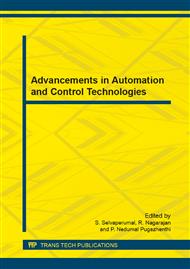p.356
p.362
p.368
p.377
p.381
p.388
p.394
p.400
p.407
Ban Technology Based Wearable Wireless Sensors for Real-Time Environments
Abstract:
In recent years, there is a pressing need for energy conservation measures against power shortages. It is important to create a relaxed and healthy environment in order to improve the quality of life as well as the effectiveness of work. We get into the revolution concept of BAN (Body Area Network), In order to provide suitable personalized services, human information data needs to be monitored and analyzed. We have developed a wearable sensing system which measures biological data and activity data in daily life using body area network technologies. Like, air conditioning to control thermal environment uses a lot of (non-renewable) electric power. In focus to achieve a good balance between energy consumption and comfortable feeling for human, and a smart system to control thermal environment intelligently has been required. This paper proposes the smart system that estimates individual thermal comfort using skin wearable wireless sensors along with we will do longer-term measurements for data accumulation through data logger with the support of IEEE802.15.6.Here we utilize some key sensors are used like skin temperature sensor and ECG sensors and indoor monitoring through Thermo hygrometer to measure the humidity. Skin temperature will be improved to worn in suits and maximize to hide the load, and every sensor informations are connected to data monitoring server for human conditional analysis.
Info:
Periodical:
Pages:
381-387
Citation:
Online since:
June 2014
Authors:
Price:
Сopyright:
© 2014 Trans Tech Publications Ltd. All Rights Reserved
Share:
Citation:


